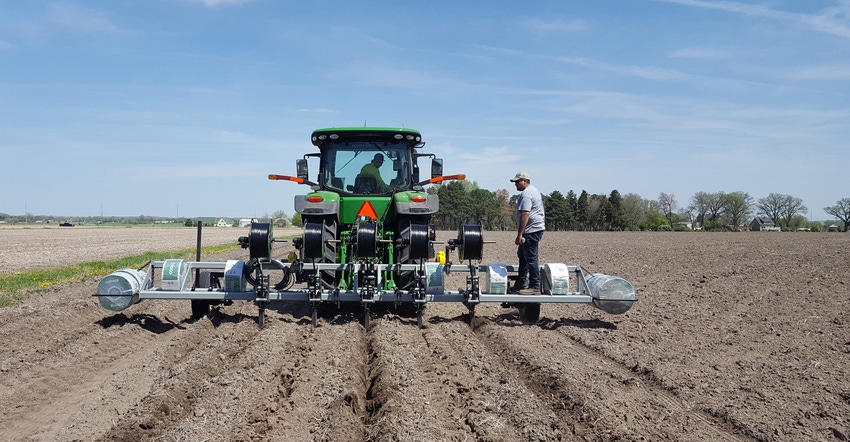April 25, 2019

Now in its third year, the University of Nebraska-Lincoln's Testing Ag Performance Solutions farm management competition has grown to include more than 100 participants in 49 teams — and has influenced similar programs, such as Oklahoma State University's TAPS program.
This year will mark the second time Nebraska Farmer has participated in the competition, which is held at an irrigated field at the West Central Research and Extension Center near North Platte. This time, we'll be participating in the recently added subsurface drip irrigated (SDI) corn competition.
In a competition such as this, which allows the participants to make numerous decisions related to production — from seed selection to planting population to nitrogen and irrigation to insurance to marketing — it probably comes as no surprise that it's an eye-opening experience for someone who isn't a producer themselves. That was especially true for Curt Arens and me last year, when we participated in the irrigated sorghum competition.
Case in point: We write about using technology such as soil moisture sensors often, and how important it is to develop a trust in the technology. However, as the 2018 season progressed — and the North Platte area received more rainfall than usual in August — it became easy to understand why the adoption curve can take some time.
In hindsight, it would have been wise to put more trust in what the soil moisture sensor was telling us — that, in this case, we probably could hold off on the last irrigation cycle of the season. But, as a journalist with not much experience making these kinds of decisions on a daily basis, it seemed easier to err on the side of caution to make sure the crop had enough (or in this case, more than enough) water to finish out the season.
This year, since we're involved in the SDI corn competition, there's a whole different layer of decisions to be made. Compared with the sorghum competition, there are more options available when it comes to hybrid selection in the corn competition.
For Curt and me, this decision wasn't an easy one, but it was one that had be made quickly. While it might sound ideal (especially for those of us less experienced with raising corn under SDI) to contact individual seed representatives for insight into what hybrids perform the best under certain conditions, it was more convenient for us to rely on plot trial data from seed companies, UNL, as well as on-farm plots.
It's been said before, but when it comes to the westernmost reaches of the Corn Belt (and beyond, depending on how we're defining the region), it can be tough to find replicated third-party data on different hybrids and varieties.
Thankfully, various county Corn Growers Associations in Nebraska have been diligent in collecting and sharing this data — including in Custer, York and Boone counties.
It highlights one of the adages a Nebraska Extension educator has pointed out when it comes to making hybrid or variety decisions: Trust but verify — and the importance of having third-party data for your region and growing conditions.
You May Also Like




